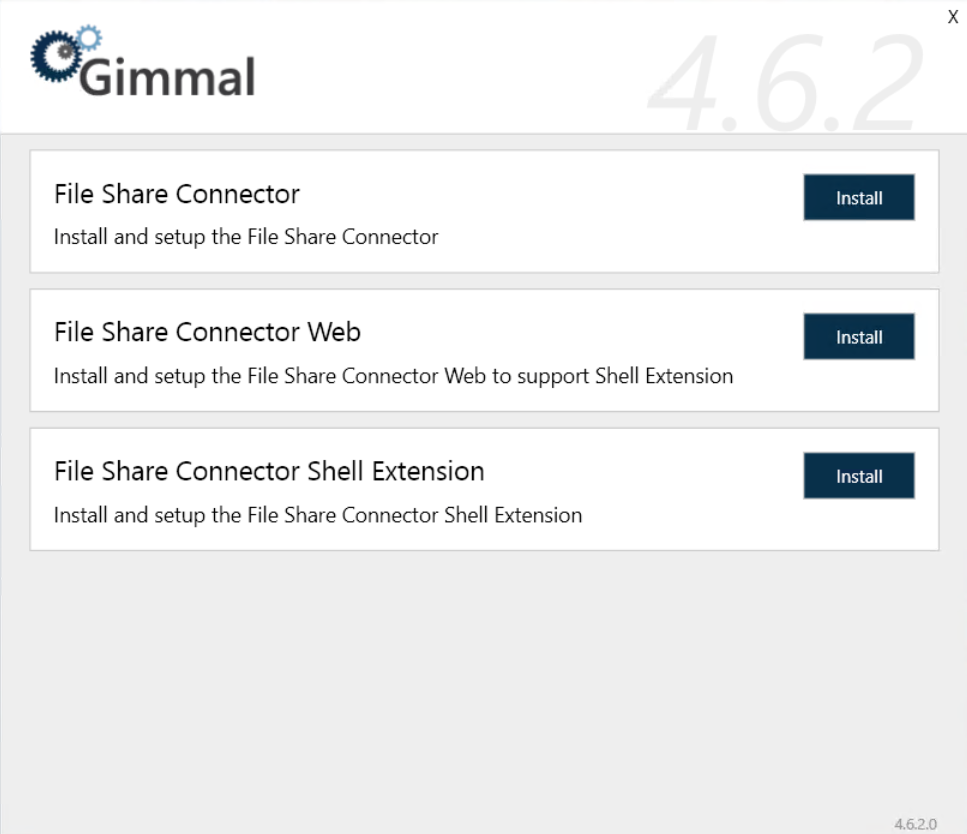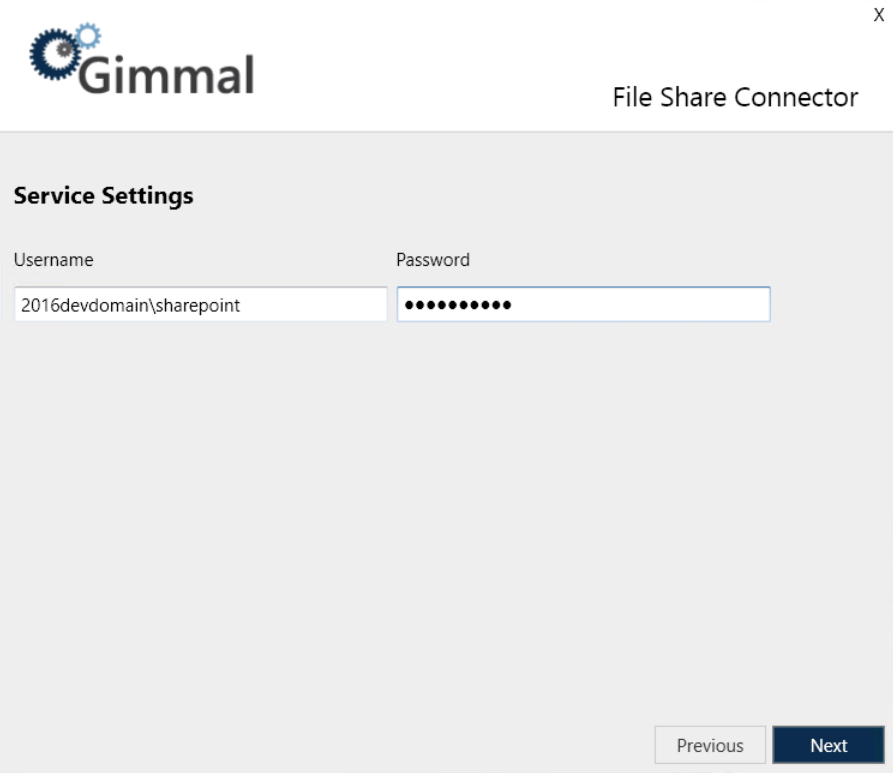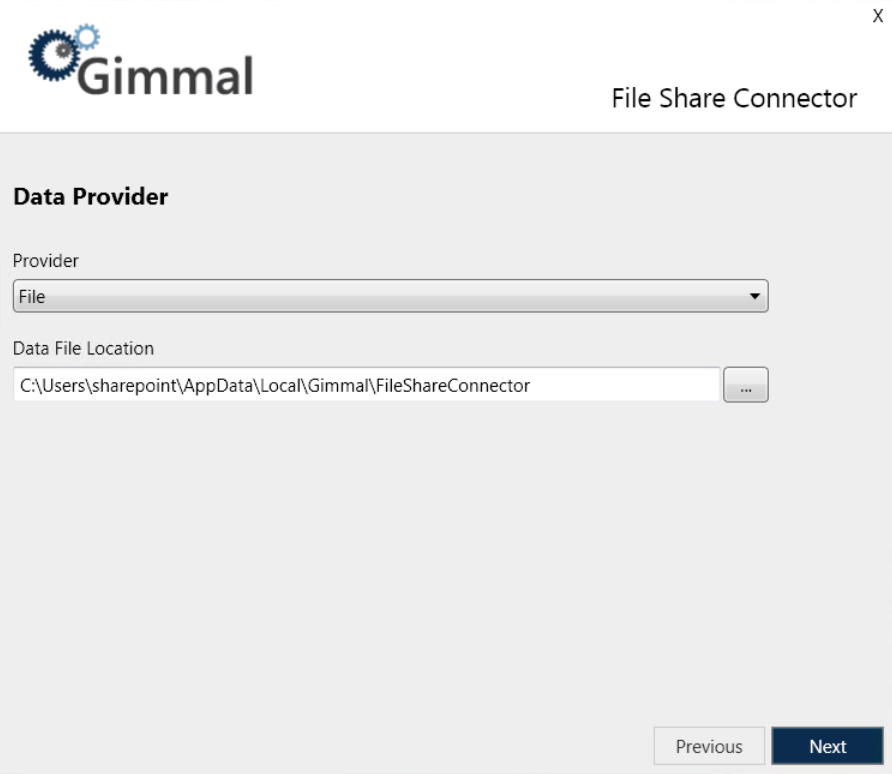File Share Connector Installation
Upon starting the File Share Connector installer, the following screen displays:

This screen presents each installable component that is a part of the File Share Connector. Click Install next to the component that you want to install. The installation wizard launches for that component. The only component required for the File Share Connector is the File Share Connector component.
Installing the File Share Connector
The File Share Connector component installs a Desktop Configuration Application and a group of Windows Services that work with Records Management to manage the lifecycle of files on any File Share that is configured.
To install the File Share Connector, perform the following steps:
From the Records Management splash screen, click the Install File Share Connector link. The File Share Connector installation screen displays.
Click Install to the right of the File Share Connector option. The first screen that displays is the check for prerequisites. This screen validates the following information before allowing the installation to proceed:
Current User is Local Administrator
Click Next. The installation location screen displays, which determines where the connector will be installed.

Leave the installation path as the default, or to change it, click the ... icon next to the installation location field, select the desired installation location, and then click Next. The Service Settings screen displays, where you will configure the settings for the File Share Connector Services.

When the File Share Connector Service is installed, a Windows Service is created. The following options specify which user account to use to execute this Windows Service.
Username (ex. DOMAIN\Username)
Password
The user account should be a domain account and must have the following file system permissions:
Read/Write: %Install Path%\Logs
Full Control: Managed file share locations to be configured (Recursive)
When assigning permissions to the user account for the managed file share locations, you must assign them directly to the user rather than to a group in which the user is a member.
Click Next. The Data Provider screen displays, which enables you to configure the data provider used by the File Share Connector.
There are two selectable Provider options: Database and File. Each option is described below.
Database:

This option stores File Share Connector data in the configured database and is the recommended data provider for most scenarios.
The following options determine the connection information that the File Share Connector will use to connect to SQL Server:
Database Server: The name of the SQL Server Install (ex. SERVERNAME\InstanceName)
Database Name: The name of the actual SQL Server Database
Use SQL Authentication: Specifies that the connection information should use SQL Authentication with the Username and Password indicated below
Username: The SQL Server username to use if SQL Authentication is specified
Password: The SQL Server password to use if SQL Authentication is specified
If SQL Authentication is not specified, the connection information will use Windows Authentication by specifying a trusted connection. This means that the Service account will be used to connect to SQL Server, therefore, this account will need the following database permissions. If SQL Authentication is specified, the SQL user will also require the following permissions.
db_datareader
db_datawriter
GRANT EXECUTE on all Stored Procedures
GRANT EXECUTE on all Scalar User Defined Functions
GRANT SELECT on all Table and Inline User Defined Functions
If Automatically Create Database is specified, the installation will automatically attempt to create the database using the Database Server and Database Name indicated. The appropriate account will also be automatically granted the appropriate rights to this database. This option requires that the current user has permission to create databases and manage security in the SQL Server instance indicated.
If Automatically Create Database is not specified, the installation will configure connection information but will not attempt to create the database. In this case, you will need to leverage the SQL Scripts at the following location (in the order listed) to manually create the database in the SQL Server instance indicated. You will also need to manually configure security as indicated above.
%Install Path%\Configuration\Sql\RecordLion.RecordsManager.FileShare.sql
%Install Path%\Configuration\Sql\RecordLion.RecordsManager.FileShare.Optimize.sql
File:

The File option stores File Share Connector data in the configured file on a file share and can be used when a database server may not be readily available. A good example of this scenario may be a branch office with limited IT and server resources. The following option determines where the data file will be stored:
Data File Location: The directory path where the file will be saved
Specify the desired Provider option, enter the required information, and then click Next. The final installation takes place using the configuration options specified above. A progress bar indicates the state of the installation.
When the application finishes installing, click Next to continue to the Finish screen. This screen indicates that the application installed successfully.
Click Finish to close the screen.
Additional Topics
